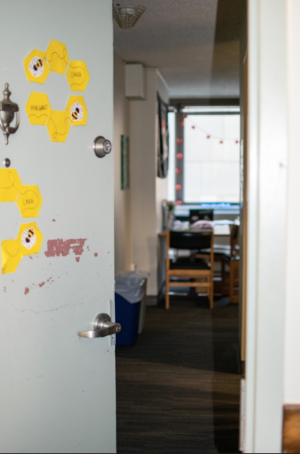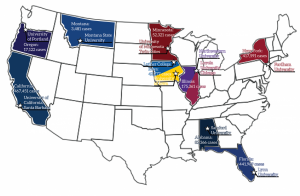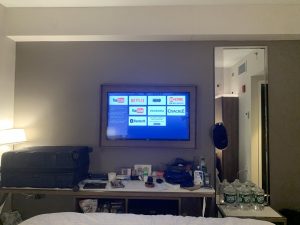What Social Distanced Dorm Life Will Look Like
As students begin to return to the dorms, students will be required to continue social distancing practices.
August 22, 2020
Fordham plans to reopen its residence halls to students this fall. Especially since the university plans on filling residence halls according to their regular capacity, the return of residential life raises questions about the ability to maintain social distancing within the dorms.
The Centers for Disease Control and Prevention (CDC) published guidelines for universities regarding the reopening of residence halls. Within these guidelines are three tiers of risk universities may incur by choosing to reopen or not.
The “lowest risk” plan of operation involves closing the residential halls completely. The next tier, termed “more risk,” involves residence halls operating, but at a lower capacity and without shared spaces. Finally, the “highest risk” tier includes fully occupied residence halls with communal spaces accessible to residents.
Fordham lies somewhere between the latter two tiers, for the university plans on allowing students to reside in on-campus dorms, but only time will tell at what capacity.
It’s also unclear as to what extent shared spaces will be open to students. According to a recent email from Laura Auricchio, Dean of Fordham College at Lincoln Center (FCLC), shared study areas, in the form of unused classrooms and library spaces, will be available to both commuter and resident students.
The limits placed on communal spaces poses concerns for programming regularly put on by resident assistants (RAs) and resident freshman mentors (RFMs). “We’re going to utilize online platforms for programming instead of the in-person programming,” said Matthew Skiebel, a RA at Fordham Lincoln Center. Alternatively, programming may also take place in “areas where it’s more plausible that we can actually socially distance.”
Nevertheless, if shared spaces were available to students, the CDC recommends placing COVID-19 prevention supplies, like 60% alcohol-based hand sanitizers and face masks, in those areas to encourage safety in those environments.
Visitation poses social distance problems as well; therefore, the university has suspended visitation of non-Fordham individuals. More broadly, the administration has stated that “visitation will be limited and capped.”
A recent post from Fordham Simplified (@fordhamsimplified on Instagram) shed some more light on the visitation policies. This account, which is run by “an informal student organization,” presented information stemming from an anonymous tip. According to the account owner, several Rose Hill RAs undergoing their training for the upcoming fall disclosed this information to Fordham Simplified.
Residential Life Staff and the Fordham Administration have not confirmed the claims made on this account, as of now.
According to the post, movement of residents will be limited between resident halls; that is, residents will only be able to access their own residence hall, not any other. Fordham will station guards at residence halls in order to enforce this rule.
The CDC’s guidelines regarding visitation do not directly stipulate that movement of students between resident halls needs to be limited, but the policy will likely prevent COVID-19 from spreading from one building to another.
Beyond visitation, Fordham has expressed the imperative of wearing masks on campus. The same rule likely applies to residents, unless they are in their own dorm room, according to Skiebel.
Much of the specific information regarding day-to-day dorm life is still unavailable, even though classes are starting at the end of this month. In the meantime, students can refer to updates from the Office of Residential Life and the administration as well as the CDC guidelines for living in shared housing to prepare for a safe transition to on-campus housing.















